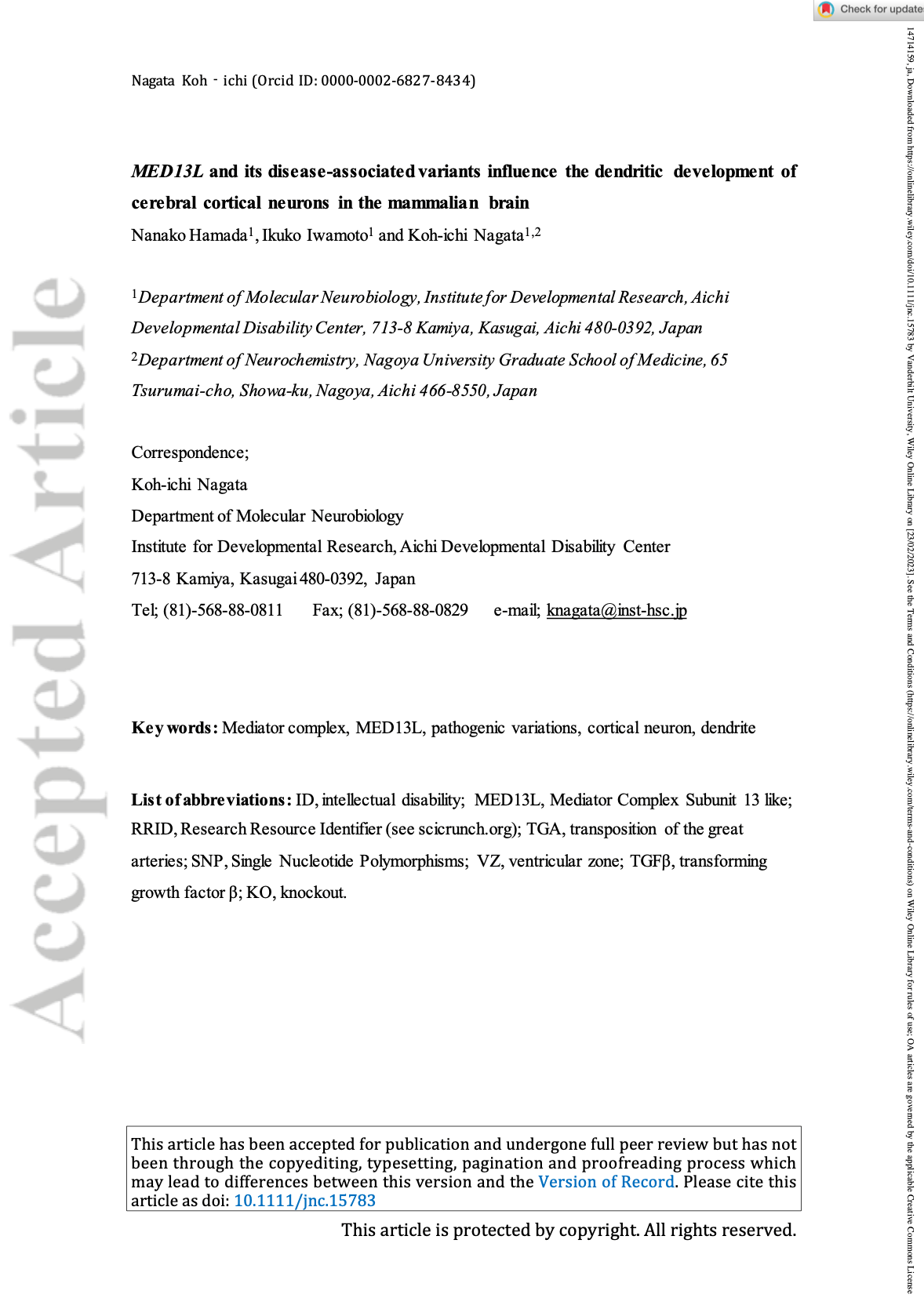
Summary
(Nanako Hamada and Koh-ichi Nagata)
- 2023
- Using embryonic mouse neurons, Hamada and colleagues showed disparity amongst missense (p.Pro866Leu, p.Ser2163Leu, p.Ser2177Tyr, p.Thr2162Met) and nonsense (p.Gln1922) variants.
- Some variants accumulated inthe nucleus while others were in the cytoplasm, the outside of the cell.
- The nonsense variant was hardly detectable aligning with haploinsufficiency with some impairment on dendrite (nerve cell responsible for excitatory function) development.
- The variant p.Pro866Leu missense variant showed a reduced number and length of dendrites (nerve cell) in a dominant-negative manner (i.e. not haploinsufficient)
- The p.Ser2163Leu variant impaired both dendrite and synaptic formation, but in opposite manners, exhibiting both a loss and a gain of function, respectively.
- Finally, p.Thr2162Met variant had a reduced function, not quite a total loss as seen in the nonsense variant
- Clinical symptoms collected showed that individuals that had variants with gains-of-function also had seizures, autism, and low tone, showing that the variants’ interaction on nerve cell development led to more pronounced clinical symptoms.
- This newest scientific study provides knowledge that different variants at different points along MED13L protein may have different functions, showing that multiple treatment choices my be necessary.

